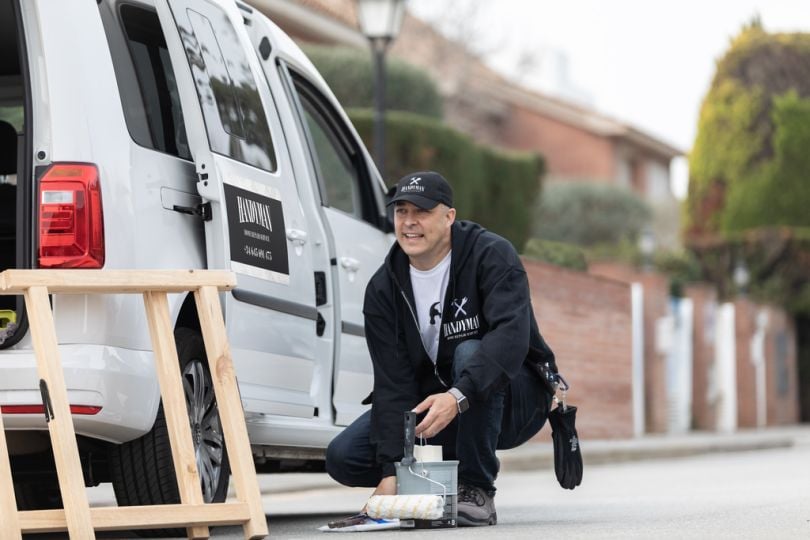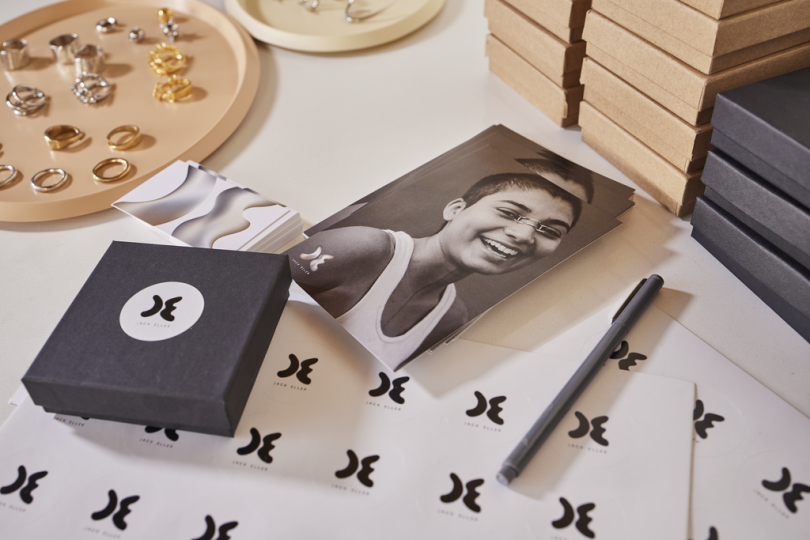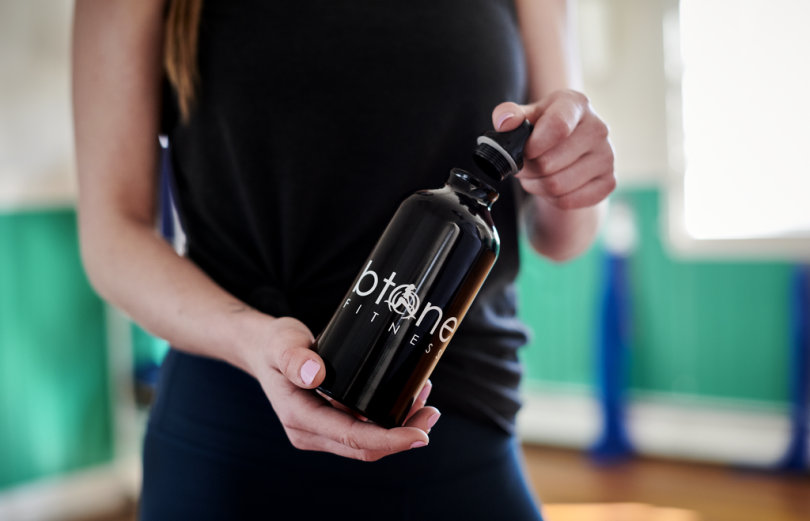Presented with a logo, could you tell if it was computer-generated or human-created?
That’s the test Jonathan Cho put forth to his colleagues at Vista when he wanted to test out of the company’s Logo Maker tools, which seeks to use machine learning technology to produce for customers what Cho calls a “really important part of starting a small business.”
“There were around 10 questions. People had to guess which one was made by the computer and which one was made by the human. I showed it to a bunch of people. I think the average score was about fifty-fifty,” he said.
Not an iron-clad measure, to be sure — but Cho was just seeking an interactive way of getting feedback on a solution team members were engaged with. Logo Maker is just one manifestation of a broader aim to fuse technology, design and creativity at the company. And that outlook assumed center stage on the heels of last year’s rebrand from Vistaprint — a brand that still exists at the company — to its current name, reflecting a mission that goes beyond its historical focus.
“We really want to be the design and marketing partner for small businesses. Ultimately, what that means is helping small businesses be the best that they can be wherever they need to show up. We’re on a journey to position Vista as a company that can really elevate small businesses and celebrate their awesomeness,” Erika Kindlund, senior director of design, said.

Realizing that agenda means providing users with different design resources based on their needs and levels of design savvy — or, as Kindlund said, solutions “at all altitudes.” There are tech-driven capabilities like the aforementioned Logo Maker versus other tools that let the user complete designs themselves. Those options are complemented by offerings like 99designs by Vista — which provides customers with actual designers — and template resource VistaCreate (formerly known as Crello, which the company acquired last year).
As Kindlund described, creating visual and creative identities is a task that all users face, but it’s not necessarily their forte. The surrounding ecosystem the organization is trying to create is about lowering the barrier to entry on quality design — in other words, “design in service of their needs, not in service of doing the design.”
“Customers want to show up in the world, and they want to manifest their businesses with an identity, but they might not know how to do that. Someone might have decided to get into business because they’re the best cupcake baker in the world, or surfboard maker or plumber. They didn’t start a business because they know how to define their business identity as tangibly as they need to, because they’re not graphic designers,” Kindlund said.
Below, Kindlund, Cho and Senior Manager of Design Ops Jenn Gehring gave Built In Boston a look at how they’re channeling the goals of Vista through their respective roles.
What customer needs are your teams each meeting?
Kindlund: We’re really trying to help small businesses show up in the world in a professional and incredible way. We intercept them at these points of need. It might be at the outset of the logo, but also asking, where’s this logo going to be? How can we manifest this logo out in the world for you, so that you can attract and engage the customers that you want, with the products and services that you sell?
Cho: Historically, we’ve just printed things. Now, not only are we going to help you print stuff, we’re going to help your business with all the things you need to get started. We’re trying to make it more accessible for everybody so they don’t have to be good designers themselves to get a good logo. We’re seeing how far we can push technology to see, given a small number of inputs — maybe a customer just gives us their business name and one hint like, I’m a beauty salon. That’s all we need to start generating professional-looking logos for them.
Gehring: Our content designers are working to provide a reassuring environment to the small businesses to instill that confidence and provide inclusive language that gives everyone a path to success. We also want to convey our Vista personality so that we can develop a relationship, build trust and help them achieve their goals in a way that feels pleasant, efficient and natural.
Operationally, the other portion of my team really serves this design organization. We want to provide the best practices, frameworks and tools to enable that team to have smooth facilitation, and collaboration that produces a seamless site experience.
How does a focus on the customer inform your work? How does that materialize in the end product?
Gehring: From an operations perspective, our design work is really rooted in identifying and solving customer problems. We aim to do that through research and customer insights and striving to get an empathetic view of the challenges small business owners face day to day. We validate that work through testing and talking to those small business owners.
Cho: Designing tools here requires a lot of empathy. Our customers have a wide range of design and technology proficiency. The challenge becomes: How can we get them a very capable tool, but not make it more complicated to use? Instead of asking, “What is the quickest, simplest way for a user to accomplish XYZ?” we ask, “Can we make technology that guesses what they’re trying to do and then just do it for them so they don’t need to learn the system?”
Kindlund: Being user-centered isn’t just a focus on our customers — it’s also a focus on the competitive landscape. With our Customer and Competitive Insights, product management and engineering partners, we’re trying to understand ways that we can get to those outcomes for our customers, leveraging technology and positioning ourselves against competitors in ways that we’re going to do better than anybody else.

Who does design collaborate with to realize these solutions?
Kindlund: We’re facilitating a design process. We don’t own the design. Our superpower is to make tangible the ideas that we’re getting from our cross-functional team that’s all working together on an objective. We work in pods and clusters that are made up of engineers as well as people in product, marketing, analytics, program management, research and content design. It’s a cross-functional team that designs together. Design is a group sport, but we are the drivers of the process.
Cho: We’re not just making a website where you can buy stuff; we’re also working pretty closely with the product marketers. For example, when I’m making the experience to design a business card, I’m talking to the people who are selling business cards and understanding all of the capabilities and features. I’ve been working in technology for a long time, but very rarely has it crossed over into helping make real things.
Our superpower is to make tangible the ideas that we’re getting from our cross-functional team that’s all working together on an objective.”
What are some recent wins?
Kindlund: Vista launched a partnership with Wix in the U.K. This is a big step in our evolution as a multichannel design and marketing pattern for two reasons. Being able to offer a world-class website to small businesses that are ready to expand their online presence is important to their success. But also, it demonstrates that we can support them as they navigate the complexities of finding the right tools and services to get started.
Cho: During the beta phase, we’re not charging anything for Logo Maker. We asked people to just answer a short survey. Throughout all of the user tests, the ratings were a lot higher than we expected. No matter the logo they made, they seemed very happy. They felt like it was a five-star logo, even though we looked at it, and we’re like, we could make that a lot better. That taught us where our bar is. We exceed expectations. We want to enable them to make an objectively five-star logo.
Gehring: Operationally, I would say probably the largest win for us is that executive leadership understands the need for and value of design ops, as well as the need for design systems to be a separate organization in the company. From a holistic standpoint, their overall commitment to great design and being customer obsessed is a massive win for our organization.

What would you tell new hires interested in Vista to convey the impact they can have?
Kindlund: Almost every single use case we support ends up powering an emotional experience, helping a small business manifest the idea of who they are. That’s an emotional moment in the journey of a small business.
Gehring: We’re going to be a part of a brand evolution. From the way that we look and feel to what we offer and what we create, you’ll be a part of forming those innovative experiences. We don’t have all the answers yet — the excitement is that you’re going to help us figure out what that looks like.
Cho: This company has made a commitment to design. As a designer, I feel like I’m very valued here. We have a strong design system. When I came on, they said there’s a big opportunity to use design to change a company and help people. It feels like they’re delivering on their promise.







